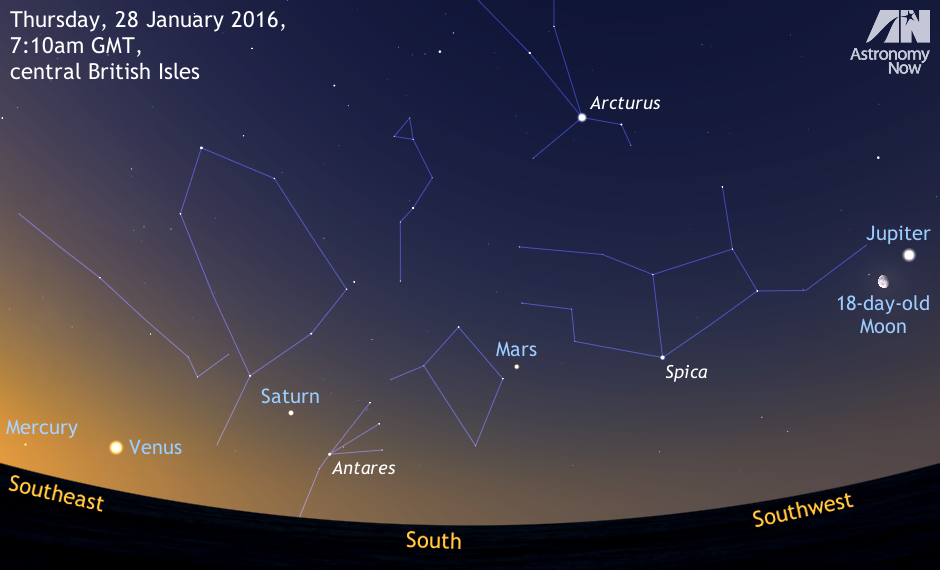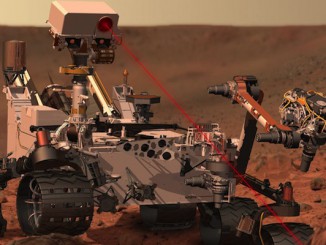
Seen from the British Isles, where the angle of the morning ecliptic to the horizon is narrower, Mercury lingers in the twilight glow for a few days more. UK observers with a level and unobscured southeast horizon will get their first opportunity to see the little planet around Thursday, 28 January an hour before local sunrise (use our Almanac to get local times of sunrise and much more), but Mercury will be low and the sky bright.
If you are up for the challenge and do succeed in glimpsing the innermost planet near the end of the month, slowly cast your gaze through a 120-degree-wide arc to its right (to the left in the Southern Hemisphere) where, if the entire sky is clear, you can encompass all five of the bright naked-eye planets. (One can also see Uranus with the unaided eye under optimal conditions, but not in the pre-dawn of late January 2016.)
As depicted in the UK view above, the planets are in the order of (left-right) Mercury, Venus, Saturn, Mars and Jupiter. As a bonus, the 18-day-old Moon is close to Jupiter on the morning of 28 January. The last quarter Moon lies close to Mars on the morning of Monday, 1 February. The waning lunar crescent then passes Saturn on the mornings of 3-4 February, finally nestled up to both Venus and Mercury in the constellation Sagittarius on Saturday, 6 February (and on the 7th in Australia/New Zealand).
Back to 28 January shown above, magnitude +0.5 Saturn is 1⅔ times as bright as star Antares a low-power binocular field of view to the planet’s lower right (Northern Hemisphere sky) in the constellation Scorpius, so it is unlikely that you will confuse the two. Similarly, despite Mars and star Spica in Virgo having a similar brightness and separated by some 20 degrees (the span of an outstretched hand at arm’s length) at the end of January, the ruddy hue of Mars will give it away — plus it’s the nearer of the two to due south at the time of observation.
The last time that Mercury, Venus, Mars, Jupiter and Saturn appeared in the same sky was from mid-December 2004 to mid-January 2005. Eleven years later, this current observing window also lasts about a month — particularly if you live in the Southern Hemisphere where Mercury gets much higher in the pre-dawn twilight and therefore visible for longer.
Inside the magazine
Find out more about how to observe the planets and what’s up in the night sky in the January 2016 edition of Astronomy Now.
Never miss an issue by subscribing to the UK’s biggest astronomy magazine. Also available for iPad/iPhone and Android devices.




